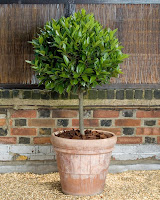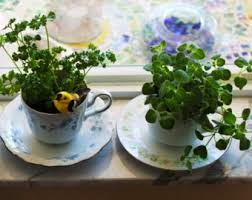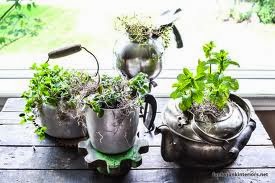 What is a Romantic “Old Rose”? Old Roses are admired for their fragrance and
large beautiful blooms every garden should have a few. Old garden roses include those rose varieties that
existed before 1867. Why that particular date? The first hybrid tea rose, “La
France” was discovered growing in a garden and introduced in 1867 which marked the start
of a new era. All classes of roses in existence before that time were deemed
‘old garden roses’ or ‘heirlooms’. Hence new classes were called modern roses.
What is a Romantic “Old Rose”? Old Roses are admired for their fragrance and
large beautiful blooms every garden should have a few. Old garden roses include those rose varieties that
existed before 1867. Why that particular date? The first hybrid tea rose, “La
France” was discovered growing in a garden and introduced in 1867 which marked the start
of a new era. All classes of roses in existence before that time were deemed
‘old garden roses’ or ‘heirlooms’. Hence new classes were called modern roses.
Romantic? Can you imagine these famous authors using
their prose with any other flower than the rose?
“But friendship is the breathing rose, with sweets in
every fold”.Oliver Wendell Holmes
“Beauty is an ecstasy; it is as simple as hunger.
There is really nothing to be said about it. It is like the perfume of a rose:
you can smell it and that is all”.
W. Somerset Maugham
W. Somerset Maugham
William
Shakespeare’s Juliet said, “What’s in a name? That which
we call a rose, by any other name would smell as sweet”.
 In Victorian England,
the mainstay of the garden was the romantic rose. In artists renditions, it was
all about the rose. The rose is found in paintings, embedded on China,
In Victorian England,
the mainstay of the garden was the romantic rose. In artists renditions, it was
all about the rose. The rose is found in paintings, embedded on China,  used as
hair ornaments, table settings, weddings, funerals, christenings and
anniversaries. Nary did an occasion not merit a spray of roses. We could learn a thing or two from our
cousins across the pond. In every nursery,
you can choose from an abundant array of Romantic Rose varieties. Romantic Old Roses top the list. In the US, you
will be hard pressed to find any nursery that carries these fragrant Romantic Old Roses.
Even though they are hard to find, you can Google Romantic Old Roses to Buy and a
list will quickly appear. I have been
growing Romantic Old Roses for over 25 years, and they never disappointed me either in bloom, fragrance or hardiness. I have
my favorites and if you plant a few in your rose garden I guarantee you soon
find yourself buying more. Drop me a line in the comments section and let me
know what your favorite rose is.
used as
hair ornaments, table settings, weddings, funerals, christenings and
anniversaries. Nary did an occasion not merit a spray of roses. We could learn a thing or two from our
cousins across the pond. In every nursery,
you can choose from an abundant array of Romantic Rose varieties. Romantic Old Roses top the list. In the US, you
will be hard pressed to find any nursery that carries these fragrant Romantic Old Roses.
Even though they are hard to find, you can Google Romantic Old Roses to Buy and a
list will quickly appear. I have been
growing Romantic Old Roses for over 25 years, and they never disappointed me either in bloom, fragrance or hardiness. I have
my favorites and if you plant a few in your rose garden I guarantee you soon
find yourself buying more. Drop me a line in the comments section and let me
know what your favorite rose is.
Once-Flowering Old Roses
Centifolias are also known as ‘Cabbage Roses’ because of the size and shape of their blooms, along with many petals as the name suggests, up to 100 or more. Developed by Dutch breeders in the period between the 17th and 19th centuries they are the classic old garden roses often reproduced in artists’ prints popular today. Centifolias have lax, open, rather lanky growth with a mixture of large and small thorns. Centifolias are once blooming, very fragrant and very winter hardy.
 Chapeau de Napoleon. A beautiful rose with clear pink, heavy, nodding blooms and a rich old rose fragrance. It is very similar to ‘Centifolia’, possibly a sport of it, but is distinguished by the greatly enlarged sepals (or wings) of its calyces. These attractively envelop the buds in greenery, giving them the appearance of a three-cornered cockade hat and causing it to be easily mistaken for a Moss Rose. It forms a strong, nicely arching shrub. Introduced by Vibert (France) in 1826. 4 x 4ft.
Chapeau de Napoleon. A beautiful rose with clear pink, heavy, nodding blooms and a rich old rose fragrance. It is very similar to ‘Centifolia’, possibly a sport of it, but is distinguished by the greatly enlarged sepals (or wings) of its calyces. These attractively envelop the buds in greenery, giving them the appearance of a three-cornered cockade hat and causing it to be easily mistaken for a Moss Rose. It forms a strong, nicely arching shrub. Introduced by Vibert (France) in 1826. 4 x 4ft.
Moss Roses are the roses of Victorian England. Moss Roses are actually a blend of Centifolias and Damasks roses that have a distinctive, fragrant moss-like growth on the sepals and smell of pine. The mossing adds great elegance to the flowers and is a result of a sport, or fault in the plant. The majority of Moss Roses were bred over a short period of time, from approximately 1850 to 1870. Moss Roses have inherited the strong fragrance of their Centifolia ancestors and pruning should be as recommended for the Centifolias. Moss roses come in almost all colors, and some varieties are repeat blooming.
 'Henri Martin', an 1862 breeding by Jean Laffay. This once-blooming rose was named for the French historian involved in the creation of the Statue of Liberty, although most who know 'Henri Martin', the rose, wouldn't know the significance of the name. Like most of the moss roses, it has a strong fragrance and resembles a semi-double Gallica rose in bush form, foliage and flower, except for the mossy buds.
'Henri Martin', an 1862 breeding by Jean Laffay. This once-blooming rose was named for the French historian involved in the creation of the Statue of Liberty, although most who know 'Henri Martin', the rose, wouldn't know the significance of the name. Like most of the moss roses, it has a strong fragrance and resembles a semi-double Gallica rose in bush form, foliage and flower, except for the mossy buds. Gallica Roses
 Rosa Mundi
Rosa Mundi
A sport of R. gallica ‘Officinalis’,
sharing all of its virtues except colour - the crimson flowers are striped with
white, giving them an attractively fresh appearance. Occasionally a flower will
revert to the colour of its parent. Although it is only once flowering, it is a
very showy plant, producing a mass of blooms with a delicious Old Rose
fragrance. It forms a bushy, compact shrub that is extremely tough,
healthy and reliable. Can also be grown as a hedge. (Prior to 1600). 4ft x
4 ft.
Damask rose dates back to
Biblical times. They originated in the Eastern Mediterranean and were
introduced to the Europeans by the Crusaders. Egyptians, Greeks, Persians and
Romans all grew this extraordinarily fragrant, perfume-like rose. Damasks are
very cold hardy as some can be grown in zone 4. They are very thorny and have a
rather lax and arching growth habit reaching three to seven feet tall. Most bloom once a year and require good fertile
soil if they are to look their best.
' Celsiana’ A Damask rose, strong, vigorous and
long-flowering, with large, pale pink, scented flowers in large clusters.
Celsiana’ A Damask rose, strong, vigorous and
long-flowering, with large, pale pink, scented flowers in large clusters.
 Celsiana’ A Damask rose, strong, vigorous and
long-flowering, with large, pale pink, scented flowers in large clusters.
Celsiana’ A Damask rose, strong, vigorous and
long-flowering, with large, pale pink, scented flowers in large clusters.
Boursault Ramblers
 'Mme Sancy de Parabere’ Boursault) Beautiful, soft pink, five inch flowers
of unique formation, with a set of clearly visible outer petals surrounding a
rosette of small petals at the center. One free, early flowering. Slight fragrance.
15 ft. Thornless
climber, clear pink, very hardy and very early-flowering, especially when
planted against a wall.
'Mme Sancy de Parabere’ Boursault) Beautiful, soft pink, five inch flowers
of unique formation, with a set of clearly visible outer petals surrounding a
rosette of small petals at the center. One free, early flowering. Slight fragrance.
15 ft. Thornless
climber, clear pink, very hardy and very early-flowering, especially when
planted against a wall. Repeat-Flowering Old Roses
Hybrid Perpetuals, the dominant class of roses in Victorian England They became the most
popular garden and florist roses of northern Europe at that time, because the
tender tea roses would not thrive in cold climates, and the Hybrid Perpetuals'
very large blooms were well-suited to the new phenomenon of competitive
exhibitions.
 'Souvenir du Docteur Jamain’ A velvety Hybrid Perpetual with the
darkest crimson flowers of all, and a scent to match. First introduced in
1865, this rose was a firm favourite of the renowned plantswoman Vita
Sackville-West, and all the top designers are still scrambling for it today. It
is one of the best climbers for a north facing wall, as the deep claret
coloured flowers tend to fade in full sun. The main flush of flowers appear in
midsummer, but it will continue to have smaller bursts until autumn. They are
tolerant of poor soils, have few thorns, and can be grown as an open shrub.
'Souvenir du Docteur Jamain’ A velvety Hybrid Perpetual with the
darkest crimson flowers of all, and a scent to match. First introduced in
1865, this rose was a firm favourite of the renowned plantswoman Vita
Sackville-West, and all the top designers are still scrambling for it today. It
is one of the best climbers for a north facing wall, as the deep claret
coloured flowers tend to fade in full sun. The main flush of flowers appear in
midsummer, but it will continue to have smaller bursts until autumn. They are
tolerant of poor soils, have few thorns, and can be grown as an open shrub.
Bourbon roses originated on the Île Bourbon (now called Réunion) off the coast of Madagascar in the Indian Ocean. They
are believed to be the result of a cross between the Autumn Damask and the 'Old
Blush' China rose, both of which were frequently used as hedging materials on
the island. They flower repeatedly on vigorous, frequently semi-climbing shrubs
with glossy foliage and purple-tinted canes. They were first introduced in France in 1823. Examples: 'Louise Odier', 'Mme. Pierre Oger',
'Zéphirine Drouhin' (the last example is often classified under climbing
roses).

'Variegata di Bologna’A sweet-scented Bourbon rose, pale pink with crimson stripes and flakes that grows to 10 feet at Mottisfont.
Albas are the most elegant of all old roses with tall, slender upright growth
producing flowers of blush pink or white with charming beauty set against the
perfect background of grey-green foliage. Albas are very hardy and thrive under
difficult conditions even partial shade. Alba roses have a strong, rich perfume
that gives them special appeal in the garden and as cut flowers. Cold hardy for
zones 3-9.
 Félicité
Parmentier was bred in Belgium before 1836, by Louis-Joseph-Ghislain
Parmentier. Félicité Parmentier is smaller than many other Alba Roses - rarely
grows more than 4-5 feet tall and 3 feet wide and have a more upright growth
habit than the bigger lax growing Alba roses. It grows and flowers
well even in a fairly shaded position with only 3-4 hours of direct sunlight.
Alba roses tolerate more shade than other groups of roses, but they still need
direct sunlight to produce flowers. Like many other old garden roses it takes
the plant about 4 years to form a nice little rose bush that flowers more and
more each year.
Félicité
Parmentier was bred in Belgium before 1836, by Louis-Joseph-Ghislain
Parmentier. Félicité Parmentier is smaller than many other Alba Roses - rarely
grows more than 4-5 feet tall and 3 feet wide and have a more upright growth
habit than the bigger lax growing Alba roses. It grows and flowers
well even in a fairly shaded position with only 3-4 hours of direct sunlight.
Alba roses tolerate more shade than other groups of roses, but they still need
direct sunlight to produce flowers. Like many other old garden roses it takes
the plant about 4 years to form a nice little rose bush that flowers more and
more each year. The Hybrid Musk
group was mainly developed by Rev. Joseph
Pemberton, a British rosarian, in the first decades of the 20th century, based upon
'Aglaia', a 1896 cross by Peter Lambert. A seedling of this rose, 'Trier', is
considered to the foundation of the class. The genetics of the class are
somewhat obscure as some of the parents are unknown. Rose multiflora,
however, is known to be one parent and Rosa moschata (the musk rose)
also figures in its heritage, though it is considered to be less important than
the name would suggest. Hybrid musk’s are disease-resistant, repeat flowering
and generally cluster-flowered, with a strong, characteristic "musk"
scent. The stems tend to be lax and arching, with limited thorns. Examples
include 'Buff Beauty' and 'Penelope'
The Hybrid Musk
group was mainly developed by Rev. Joseph
Pemberton, a British rosarian, in the first decades of the 20th century, based upon
'Aglaia', a 1896 cross by Peter Lambert. A seedling of this rose, 'Trier', is
considered to the foundation of the class. The genetics of the class are
somewhat obscure as some of the parents are unknown. Rose multiflora,
however, is known to be one parent and Rosa moschata (the musk rose)
also figures in its heritage, though it is considered to be less important than
the name would suggest. Hybrid musk’s are disease-resistant, repeat flowering
and generally cluster-flowered, with a strong, characteristic "musk"
scent. The stems tend to be lax and arching, with limited thorns. Examples
include 'Buff Beauty' and 'Penelope'Noisette rose was raised as a hybrid seedling by a South Carolina rice planter named John Champneys Its parents were the China Rose 'Parson's Pink' and the autumn-flowering musk rose (Rosa moschata), resulting in a vigorous climbing rose producing huge clusters of small pink flowers from spring to fall. The first Noisettes were small-blossomed, fairly winter-hardy climbers, but later infusions of Tea rose genes created a Tea-Noisette subclass with larger flowers, smaller clusters, and considerably reduced winter hardiness.
 'Mme. Alfred Carriere', though classed as a Noisette, the full blooms of
this rose is more of a Bourbon or Hybrid Tea
in shape. The flowers are intensely fragrant, cupped,
and double opening the palest of pinks, then cooling to creamy white. Vigorous
to about 20 feet and easy to work with, "Madame Alfred" will create a
vertical focal point in any garden. Its nearly thornless canes make it a very
easy rose to train.
'Mme. Alfred Carriere', though classed as a Noisette, the full blooms of
this rose is more of a Bourbon or Hybrid Tea
in shape. The flowers are intensely fragrant, cupped,
and double opening the palest of pinks, then cooling to creamy white. Vigorous
to about 20 feet and easy to work with, "Madame Alfred" will create a
vertical focal point in any garden. Its nearly thornless canes make it a very
easy rose to train. 


























